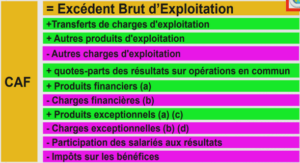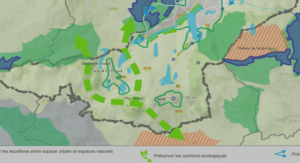The boreal forest in Canada
The boreal forest is the largest terrestrial carbon reservoirs representing 33% of the world’s forest lands (FAO, 2010). It stretches from Greenland to Newfoundland and across northern Canada into Alaska in North America (Bradshaw et al., 2009; Brandt et al., 2013). The boreal forest has a subarctic climate, which is characterized by cold and snowy winters with a short growing season (Burton et al., 2010). Average daily temperatures are above 10°C for 30 to 120 days of the year (Walter, 1985). Precipitations vary greatly along longitudinal gradients; with averages ranging from 150 to 450 mm/year (Walter, 1985). According to the World Reference Base for soil resources (WRB), boreal soils are mostly cryosols (27%), podzols (15%), cambisols (8%) and leptosols (8%); being relatively humid and cold (Jones et al., 2010).
Wildfires are the most dominant disturbances influencing forest composition and carbon storage in boreal forests (Bergeron et al., 2014; Ito, 2005; Sukhinin et al., 2004; Weber et Flannigan, 1997). Their size and frequency strongly control the relative abundance and distribution of tree species, forest composition, internal structure and dynamics (Johnstone et Chapin, 2006). Many other natural drivers of ecosystem dynamics such as long-term climate variability and insect outbreaks are also of importance for the dynamics of the boreal forests. The two most disruptive defoliators in Canadian boreal forests are the spruce budworm (Choristoneura fumiferana Clemens, SBW), which mostly defoliates balsam fir and spruce species, and the forest tent caterpillar (Malacosoma disstria Hübner; FTC) that attacks trembling aspen, balsam poplar and paper birch as its main hosts (Chen et Popadiouk, 2002; Moulinier et al., 2011). These disturbances play an important role in the recruitment of species, biogeochemical cycling of nutrients and maintenance of forest productivity (Brandt et al., 2013). At the landscape scale, these disturbances affect species composition, structure and forest successional dynamics (Bergeron et Dansereau, 1993; Brassard et Chen, 2010).
Boreal forests are generally dominated by one to two species per stand, with singlespecies stands being quite common (Zasada et al., 1997). In Northeastern Canada, the boreal forests are dominated by black spruce (Picea mariana Mill., referred hereafter as spruce) (Brandt, 2009; Liu et Yang, 2014). There are also large areas covered by shade-intolerant deciduous trees such as trembling aspen (Populus tremuloides Michx., referred hereafter as aspen), balsam poplar (Populus balsamifera L.), and paper birch (Betula papyrifera Marshall), either in pure or mixed stands with conifers such as eastern larch (Larix laricina (Du Roi) K. Koch), balsam fir (Abies balsamea (L.) Mill.) and jack pine (Pinus banksiana Lamb.) (Brandt et al., 2013). According to the vegetation zones and bioclimatic domains of Quebec in eastern Canada (Saucier et al., 1998), these mixed stands of conifers and broadleaf tree species are located in the southern part of the black spruce – moss and the balsam fir – white birch domains . The latter being referred to as boreal mixedwoods.
he successional dynamics of the forest, from which the diversity of stand types in the southern part of the black spruce – moss bioclimatic domain originated, also makes the forests of this part of the boreal forest qualify as boreal mixedwoods. Boreal mixedwoods are defined in terms of characteristic site types to provide a stable frame of reference for a complex and dynamic forest (Chen et Popadiouk, 2002; MacDonald et Weingartner, 1995). Essential elements defining mixedwood sites include the abundance, diversity, and relative position of associated species at each successional stage depending on the disturbance type and pre-disturbance stand composition (Towill et al., 2004). Other characteristics include unrestricted drainage of soils, well-drained fertile soils on mid-slope positions, deep soils (medium to fine textures) from glacial lacustrine or alluvial origin (McClain, 1981; Pierpoint, 1981). These characteristics prevail in the southern part of the black spruce-moss bioclimatic zone of Quebec (Saucier et al., 1998) .
In boreal mixedwoods, early successional stages following fire are generally dominated by shade-intolerant broadleaf species such as aspen (Bergeron, 2000; Bergeron et Dubuc, 1989). During subsequent years following the fire, shade-tolerant species such as black- and white spruce seed-in gradually and dominate the understory (Galipeau et al., 1997). Because of their differences in mode of regeneration, shade-tolerance and growth dynamics, aspen attain optimal merchantable size before spruce and dominates the canopy. Although the crown hierarchy of spruce and aspen benefits to spruce (spruce prefers diffuse light for its photosynthesis while aspen in the upper strata effectively captures direct light), it has been reported that the absence of canopy gaps negatively impacts the growth of spruce (Smith et al., 2016). However, the shadetolerant character of spruce and the progressive accumulation of its recalcitrant litter in the forest floor contributes to acidifying and increasing the thickness of the organic layer that slows aspen growth and inhibits its regeneration (Lafleur et al., 2015a). Thus, when spruce reach optimal size, aspen biomass has often decreased as a result of mortality from senescence (Pothier et al., 2004). This phenomenon leads to sprucedominated stands and is commonly interpreted as the competitive exclusion of aspen by spruce during the forest succession. These spruce-dominated stands feature low diversity of vascular plants, animals and insects (Cavard et al., 2011a) and are more susceptible to productivity losses (Lafleur et al., 2015b) than mixed stands.
Boreal forests provide numerous goods and services to Canadian populations. These are classified as (1) provisioning (timber, pulp, fuelwood, food, and freshwater); (2) regulating (climate regulation, flood regulation, disease regulation, and water purification); (3) cultural (spiritual, educational, recreational, and aesthetics); and (4) supporting (primary production, nutrient cycling, and soil formation) services (Hassan et al., 2005). In particular, the boreal forest plays an important role in supporting the regional and global forest industry and carbon sequestration (Conard et Davidenko, 1998; Kuusela, 1992). Both human activities and climate change influence these functions (Flannigan et al., 2009; Liu et al., 2012) and it is of paramount importance to supply forest management with a good understanding of ecological drivers of ecosystem structure and function (e.g. biodiversity-productivity relationship, BPR).
Context of diversity-productivity relationship studies in boreal forests
Natural disturbances shape the forest landscape and influence stand species diversity, composition and structure in boreal forests (Chen et al., 2009; Chen et Popadiouk, 2002). As results, tree species in boreal forests differ strikingly in their rates of growth, nutrient uptake strategies, transpiration, litter chemistry and flammability (Flanagan et Van Cleve, 1983; Pastor et al., 1996; Van Cleve et al., 1991) which confer them a higher functional diversity. All these changes occurring in different stand developmental stages determine the productivity of stands in the boreal forest (Chapin III et al., 1998, 2000) but their heterogeneity across the forest landscape could make productivity modelling more complex.
The lower species diversity and the dynamic aspect of stands in the boreal mixedwoods, led DPR studies in boreal forests to generally focus on how changes in stand species composition affect tree growth and stand productivity (Goulden et al., 2011; Paré et Bergeron, 1995; Taylor et al., 2014); particularly with regard to the productivity of commercial tree species with high merchantable value (Légaré et al., 2004; Légaré et al., 2005a; Felipescu et Comeau 2007; Cavard et al., 2010).
CHAPTER I GENERAL INTRODUCTION |






